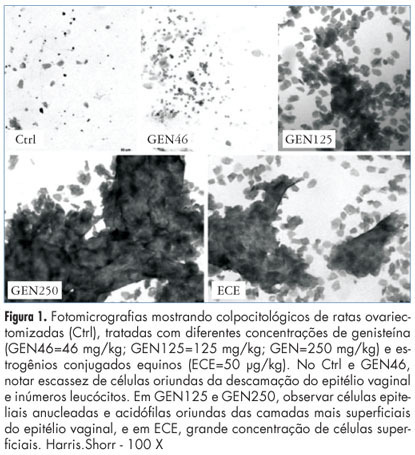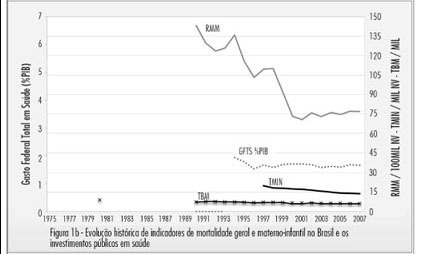Summary
Revista Brasileira de Ginecologia e Obstetrícia. 2011;33(10):280-285
DOI 10.1590/S0100-72032011001000002
PURPOSE: To analyze the results of assessment of fetal well-being in pregnancies complicated by moderate or severe maternal thrombocytopenia. METHODS: Data from April 2001 to July 2011 of 96 women with a diagnosis of thrombocytopenia in pregnancy were retrospectively analyzed. We analyzed the following tests performed during the antepartum period for fetal assessment: cardiotocography, fetal biophysical profile, amniotic fluid index and umbilical artery Doppler velocimetry. RESULTS: A total of 96 pregnancies with the following diagnoses were analyzed: gestational thrombocytopenia (n=37, 38.5%) hypersplenism (n=32, 33.3%), immune thrombocytopenic purpura (ITP, n=14, 14.6%), secondary immune thrombocytopenia (n=6, 6.3%), bone marrow aplasia (n=3, 3.1%), and others (n=4, 4.1%). Cardiotocography showed normal results in 94% of cases, a fetal biophysical profile with an index of 8 or 10 in 96.9% and an amniotic fluid index >5.0 cm in 89.6%. Doppler umbilical artery velocimetry showed normal results in 96.9% of cases. In the analysis of the major groups of thrombocytopenia, the diagnosis of oligohydramnios was found to be significantly more frequent in the group with ITP (28.6%) compared to the other groups (gestational thrombocytopenia: 5.4% and hypersplenism: 9.4%, p=0.04). CONCLUSIONS: This study indicates that in pregnancies complicated by moderate or severe maternal thrombocytopenia, even though the fetal well-being remains preserved in most cases, fetal surveillance is important in pregnant women with ITP, with emphasis on amniotic fluid volume evaluation due to its association with oligohydramnios.
Summary
Revista Brasileira de Ginecologia e Obstetrícia. 2011;33(9):264-269
DOI 10.1590/S0100-72032011000900008
PURPOSE: to evaluate the effects of high doses of genistein on the mammary glands of adult female rats. METHODS: Twenty-eight days after oophorectomy, 50 adult female rats were divided into five groups, as follows: a control group (Ctrl), three rats that received genistein (GEN) at the doses of 46 mg/kg (GEN46;), 125 mg/kg (GEN125) and 250 mg/kg (GEN250); one group received conjugated equine estrogen at the dose of 50 µg/g (ECE50). The substances were administered daily for 30 consecutive days by gavage and in the last week of the period of treatment, colpocytological exams were carried out for seven consecutive days. After treatment, the animals were anesthetized, blood samples were collected for estradiol and progesterone determination and the first pair of inguinal mammary glands was removed and processed for histomorphometric analysis. Collected data were subjected to analysis of variance supplemented by the Tukey-Kramer test (p<0.05). RESULTS: the ctrl group and the ones treated with different doses of GEN showed atrophic mammary glands, whereas the glands were more developed in the ECE group, where numerous mammary ducts and alveoli were observed. Morphometry showed a larger area of mammary parenchyma in the ECE group (98.870.1±550.4 µm²* per mm²; p<0.05) compared with other groups (Ctrl=36.875.6±443.4; GEN46=37.001.7±557.4; GEN125=36.480.8±658.3 and GEN250=37.502.8±669.3). The same occurred in the number of alveoli in the ECE group (33.2±6.9* per mm²; p<0.05) compared to the other groups (Ctrl=10.4±2.1, GEN46=11.2±3.1; GEN125=11.6±2.1 and GEN250=12.3±2.3). The estradiol level was higher in the ECE group compared to the other groups (9.4±1.7 pg/mL; p<0.05), whereas serum levels of progesterone were similar in all groups. CONCLUSION: the administration of genistein at high doses had no trophic effect on the mammary glands of rats.

Summary
Revista Brasileira de Ginecologia e Obstetrícia. 2011;33(9):258-263
DOI 10.1590/S0100-72032011000900007
PURPOSE: To evaluate the coverage of Pap smear cytology at Basic Family Health Units (BFHU) and to describe the characteristics of non-performance of this test in the last three years. METHODS: A cross-sectional study was conducted in Rio Grande (RS), Brazil, in areas covered by the Family Health Teams Family (FHT). The interviews were conducted by students participating in the Health-PET, at women’s home. Crude analysis was performed using SPSS software to calculate prevalence ratio, 95% confidence intervals and p value. Multivariate analysis was performed by Poisson regression using Stata 9.0 software, which were included the variables with p value of up to 0.20 in the crude analysis. At the first level, the variables were age, having a partner, and literacy. At the second level, the variables were number of visits and offer of a Pap smear. RESULTS: The prevalence of Pap cytology performed 36 months ago or less was 66.3%. In adjusted analysis, women aged 19 years or less (p<0.001), without a partner (p<0.001), illiterate (p= 0.01), who had never consulted at the basic unit (p=0.02) and who had not been offered the examination during the visit (p=0.006), were more likely not to have had a cytopathology exam in the last 36 months. CONCLUSION: The local health proved to be ineffective and inequitable. Ineffective because it covers fewer women than indicated by the World Health Organization and uneven because access to this test varied according to some characteristics of the users.
Summary
Revista Brasileira de Ginecologia e Obstetrícia. 2011;33(9):252-257
DOI 10.1590/S0100-72032011000900006
PURPOSE: To describe and compare the phases of stress of primiparae in the third trimester of pregnancy and postpartum, associating them with the occurrence of postpartum depression. METHODS: The study consisted of two stages (Stage 1 and Stage 2), characterized as longitudinal research. Ninety-eight primiparae participated in Stage 1, and 64 of them participated in Stage 2. In Stage 1, data were collected in the third trimester of pregnancy, and in Stage 2, at least 45 days after delivery. The Stress Symptoms Inventory Lipp (ISSL) was applied in Stage 1 and an interview was held to characterize the sample. In Stage 2, we applied again the ISSL and also the EPDS (Edinburgh Postnatal Depression Scale). Data were analyzed using SPSS for Windows®, version 17.0. The statistical analyses were performed using the Student’s t-test and the Spearman p. RESULTS: Seventy-eight percent of the participants showed significant signs of stress in the third quarter and 63% of them during the postpartum period, with a significant difference in the stress occurring in the third trimester and postpartum (t=2.20, p=0.03). There was also a correlation between the stress occurring during pregnancy and in the puerperium and the manifestation of postpartum depression (p<0.001). CONCLUSION: More than half of the women experience significant stress signs during both pregnancy and the postpartum period. However, the frequency of onset of significant symptoms of stress was higher during pregnancy than during the puerperium. These results seem to be closely related to the manifestation of postpartum depression, indicating the relationship between stress and postpartum depression.
Summary
Revista Brasileira de Ginecologia e Obstetrícia. 2011;33(9):246-251
DOI 10.1590/S0100-72032011000900005
PURPOSE: To estimate the prevalence of folic acid supplementation during pregnancy and to identify maternal factors associated with its consumption. METHODS: This was a cross-sectional study with 280 women from the city of Diamantina (MG), Brazil. The dependent variable was use of a folic acid supplement during pregnancy, and the independent variables were age and maternal schooling, number of prenatal care visits, parity, marital status and presence or absence of anemia. Poisson regression analysis was used to assess the association of independent variables with the dependent variable. RESULTS: Women with less education, adolescents, and number of prenatal visits less than seven were 1.61 (95%CI=1.34-1.93), 1.18 (95%CI=1.03-1.35) e 1.18 (95%CI=1.02-1.37) more likely not to consume the supplement during pregnancy, respectively. CONCLUSIONS: The prevalence of consumption of folic acid among pregnant women was low, associated with maternal age and education and number of prenatal visits.
Summary
Revista Brasileira de Ginecologia e Obstetrícia. 2011;33(9):240-245
DOI 10.1590/S0100-72032011000900004
PURPOSE: To determine the accuracy of ultrasound in fetal weight estimation and to evaluate maternal and/or fetal factors that could interfere in the result. METHODS: This was a transverse prospective study, involving 106 patients, with 212 fetal weight evaluations, by two observers, within 24 h to delivery. The following parameters were measured: biparietal diameter, head circumference, abdominal circumference, and femoral length. Fetal weight was estimated using the Hadlock formula and the results were compared to birth weight. The maternal factors examined were: weight, BMI, and skin to uterus distance measured by ultrasound, and the fetal factors were: presentation, position, placental localization and thickness, fetal weight, and amniotic fluid index (AFI). RESULTS: There was good correlation between estimated fetal weight and birth weight (R=0.97). In 79.2% and in 92.4% of cases the estimated fetal weight was within 10% and 15% of birth weight, respectively. The only maternal factor that presented a positive correlation with percent error in the estimate of fetal weight was the skin to uterus distance (R³0.56). Fetal weight showed negative correlation with percent error (R>-0.36; p<0.001), with a significant tendency to overestimate fetal weight in the group of very low weight - <1000 g (p<0.05). The AFI showed a low negative correlation with percent error (R=-0.21; p<0.001) with no difference between AFI groups (p=0.516). CONCLUSION: Ultrasound presented good accuracy in the estimation of fetal weight. The error of weight estimate was directly proportional to the skin to uterus distance and inversely proportional to fetal weight. AFI did not interfere significantly in the ultrasound prediction of fetal weight.
Summary
Revista Brasileira de Ginecologia e Obstetrícia. 2011;33(9):234-239
DOI 10.1590/S0100-72032011000900003
PURPOSE: To analyze comparatively the conditions of birth in Portugal and Brazil from 1975 to 2007. METHODS: Indicators of maternal and child health: rates of maternal death and neonatal mortality, cesarean rate and public spending on health were retrospectively collected from electronic databases of health information from the Unified Health System (DATASUS) and the National Institute of Statistics of Portugal (INE), among others. Their values were descriptively analyzed in terms of trends and the temporal sanitary scenarios were presented and discussed, comparing, when possible, the information from the two countries. RESULTS: Births in Portugal were characterized by lower maternal mortality (12.2x76.2/100.000) and neonatal mortality (2.2x14.6/1000), compared to Brazil, considering the average of the years from 2004 to 2007. The history of the conquest of maternal and child indicators of excellence in Portugal involved a phase that paralleled the significant socio-economic improvements and the increasing contribution of public health, followed by another from the 1990s, involving better equipped health care units. In Brazil, rates of maternal and neonatal mortality are declining, but satisfactory values have not yet been achieved. The historical difference in the amount of social spending on health, both in current and historical values, was a crucial difference between countries. Despite the disparities in maternal and neonatal outcomes, cesarean section rates were equally ascendant (34.5% in Portugal and 45.5% in Brazil), considering the average for the period from 2004 to 2007. CONCLUSION: The indicators of maternal and neonatal death in Portugal and Brazil have aligned themselves to social, economic and contributions of public investments in health. The increasing rates of caesarean section do not explain the discrepancies in maternal and neonatal outcome between countries.

Summary
Revista Brasileira de Ginecologia e Obstetrícia. 2011;33(9):227-233
DOI 10.1590/S0100-72032011000900002
PURPOSE: To evaluate the coping strategies of women facing a diagnosis of fetal heart disease. METHODS: We interviewed 50 women who had received a diagnosis of fetal heart disease. For data collection we used a semi-directed and Coping Strategy Inventory. The interview was conducted, on average, 22 days after the diagnosis. RESULTS: When asked how they felt about the baby, 56.0% reported concern and fragility, while the remaining 44.0% said they were happy and well. The strategies most used by women were problem solving (73.0%), social support (69.1%) and escape/avoidance (62.7%), and the least used strategy was removal (17.3%). It was found that women with partners, as well as those with 1 or 2 children, used more the problem-solving strategy (p<0.05). CONCLUSIONS: The active coping strategies, focused on problem solving and seeking social support, coupled with the responsibility and the need for specific care for the survival and welfare of the baby, brought about a closer relationship with the pregnancy, strengthening the maternal-fetal bond.